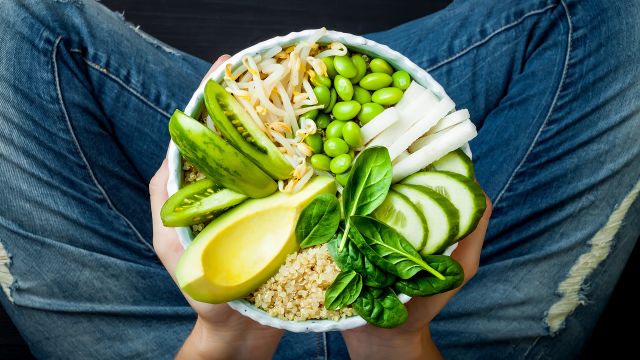Updated on January 10, 2024.
Soy appeals to people for a variety of reasons. Vegetarians like the plant-based protein it affords them. Folks who are lactose intolerant seek it out as a dairy alternative. Still others find soy to be delicious.
Many more appreciate soy for the promising health benefits. Eating soy has been linked to lower cholesterol, fewer hot flashes, increased prostate function, improved bone density, reduced cancer risk, and better heart health. For example, people who ate tofu—a whole soy product—at least once weekly had an 18 percent lower risk of heart disease than those who almost never ate tofu, according to a large 2020 study published in the journal Circulation.
While every product containing soy can’t be spoken for, whole soy is a healthy addition to a diverse diet. Low in total fat and cholesterol, it provides a healthy dose of fiber, B vitamins, potassium, magnesium, unsaturated fatty acids and of course, protein.
With that in mind, here are some basic guidelines to help you consider your soy options.
Choose whole soy
Soy products appear in many forms all over the grocery store. You'll typically find edamame (whole soy peapods), soy burgers, and soy sausages in the frozen-food aisle, soy cheese and soy milk in the dairy aisle, and tofu in the produce aisle. How do you know which to choose?
As a general rule, try not to stray too far from the whole soybean. As with fruit and vegetables, much of the nutritional power of soy appears to lie in health-boosting compounds called phytochemicals. Researchers believe that the complex mix of phytochemicals—especially isoflavones—found in soy are most nutritious when they are consumed in their natural state, along with the proteins in whole soy foods.
Also, whole soy foods are best because the levels of beneficial phytochemicals that occur naturally in soybeans may be altered or diminished in processed soy products. Just as white bread, made from refined grains, is less nutritious than whole-grain bread, so, too, is processed soy usually depleted of fiber and other nutrients.
Read the labels
When shopping for soy-based foods, look beyond the marketing claims on the packaging and check the ingredients list. Always opt for foods made from whole soybeans rather than those with added soy protein, concentrated soy or soy isolates. Keep an eye on total fat, saturated fat, cholesterol, sugar, and sodium levels, too. As with any other packaged foods, some processed soy products may be loaded with them.
As scientists continue to explore the benefits of soy, your best bet is to stick with traditional whole soy foods over packaged soy protein shakes, frozen desserts, energy bars, powders, and supplements. Much of the original research exploring the benefits of soy was based on the dietary habits of Asian populations. Whole foods such as edamame, tempeh, miso, and tofu are all common staples of certain Asian diets.
Diversify your diet
Versatile, nutritious, and delicious, soy-based foods can be prepared in a variety of different ways. Try these simple tips to pack more soy into your diet:
- Because tofu has a mild taste and a porous texture, it will readily absorb the flavors of other ingredients in a recipe. Try marinating tofu in reduced-sodium soy sauce, or mix it with crushed ginger. You can also add chopped tofu or tempeh to stir-fried vegetables.
- Use miso in place of chicken bouillon in soups or rice dishes. Just note that it can contain quite a bit of sodium, so make sure to check labels and consider alternatives if you have or are at risk of high blood pressure.
- Try using soybeans in lieu of other legumes, such as kidney beans or garbanzo beans in chili or hummus. Or, sprinkle fresh soy beans into Buddha bowls.
- Spread soy-nut butter on whole-grain bread.
- Snack on soy nuts or edamame.
Focus on balance
If you're ready to add soy to your menu, just remember that balance is still the key to a healthful diet. Rather than focusing heavily on one food, expand your selections to include a wide range of great-tasting snacks and meals that are full of vitamins, minerals, and fiber. Mixing up your recipes with moderate amounts of whole soy foods will provide you with another tasty and nutritious menu option.







